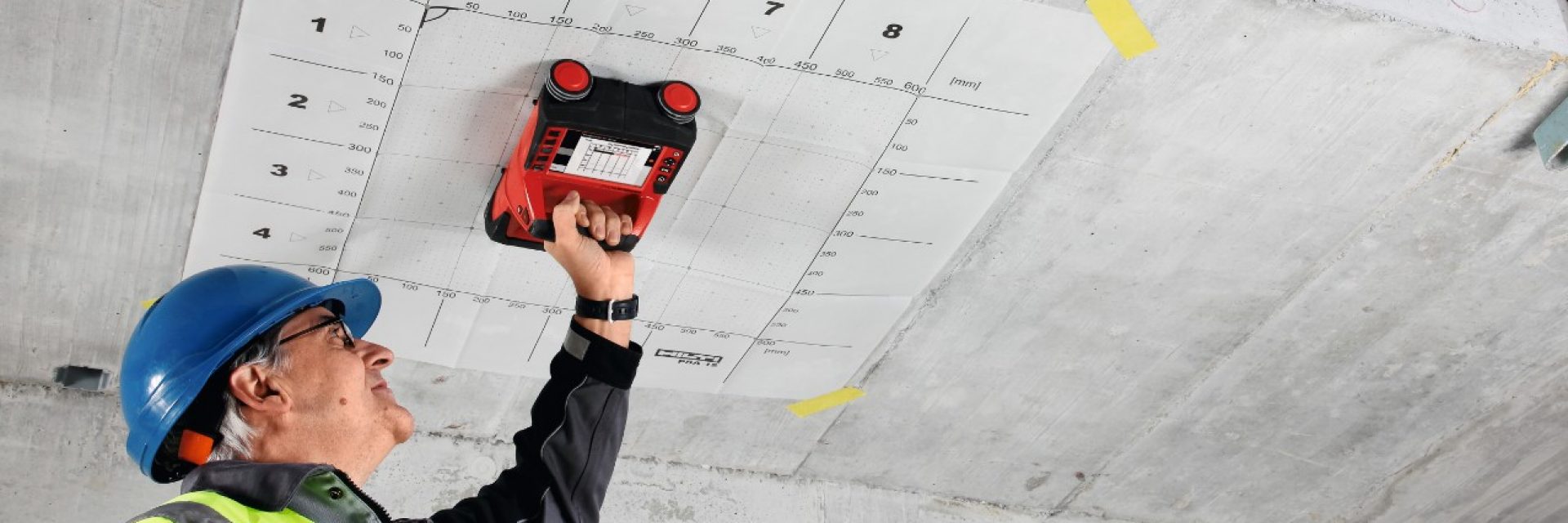SCANNING post-tensioned cables at TECH PARK II in PUNE, INDIA
How we helped to check the safety of tendons in large concrete slabs


THE CHALLENGE
An easy, everyday mistake on jobsites: a pipe, cable or rebar embedded in concrete is drilled through. This was the case in Tech Park – a large, high-spec addition to Pune’s booming central business district in western India – when, late in the fit-out stage, holes were drilled around a post-tensioning cable where such work was forbidden.
Fearing a possible post-tension (PT) cable blowout, the General Contractor needed to create detailed images of the inside of the slab around the PT cable. This was the only non-destructive test to make sure that the structural integrity had not been compromised.
THE SOLUTION
The best advice is not to take any risks were post-tensioning is involved. Severing a tendon is extraordinarily dangerous and destructive, not just for your jobsite, but for anything in the firing line after the taut cable snaps. The load capacity can be critically reduced by a damaged tendon; a problem which may only become apparent once the building if fully built-out and inhabited. Although the unmistakable booming noise of a snapped PT cable was not heard, the architects and contractors took pride in the quality of their work, and so they decided to survey the post-tensioning cables for even minor damage anyway.
To prevent their precautionary measure from delaying progress, the detection system needed to be fast and provide reliable, very precise data. The tool of choice was the Hilti PS 1000 X-Scan detection system. First, the X-Scan was used to detect the exact location of the tendons and to find indicate the cover depth. This scan data was then compared with the depth of the drilled holes, to see if the tendon was at the same depth and if it were possible that the tendon could have been hit. The results showed that none of the PT cables had been damaged during the drilling. Work could continue without further delay.
Equipment needed for this concrete scan
Hilti PS 1000 X-Scan
PS 1000 X-Scan is designed for scanning large areas and identifying all common objects embedded deep within multiple layers of concrete.
The color screen shows real-time imaging results in 2D. When used with the optional PSA 200 tablet, you can view and analyze embedded objects live in 3D too.
Your scan results can transferred to master drawings or BIM models using PROFIS Detection software.
Case study: rebar detection in central London
A PS 1000 X-Scan detection system was also used to survey and document rebar in a group of exsiting concrete structures in downtown London.
See large-scale rebar scanning in action

